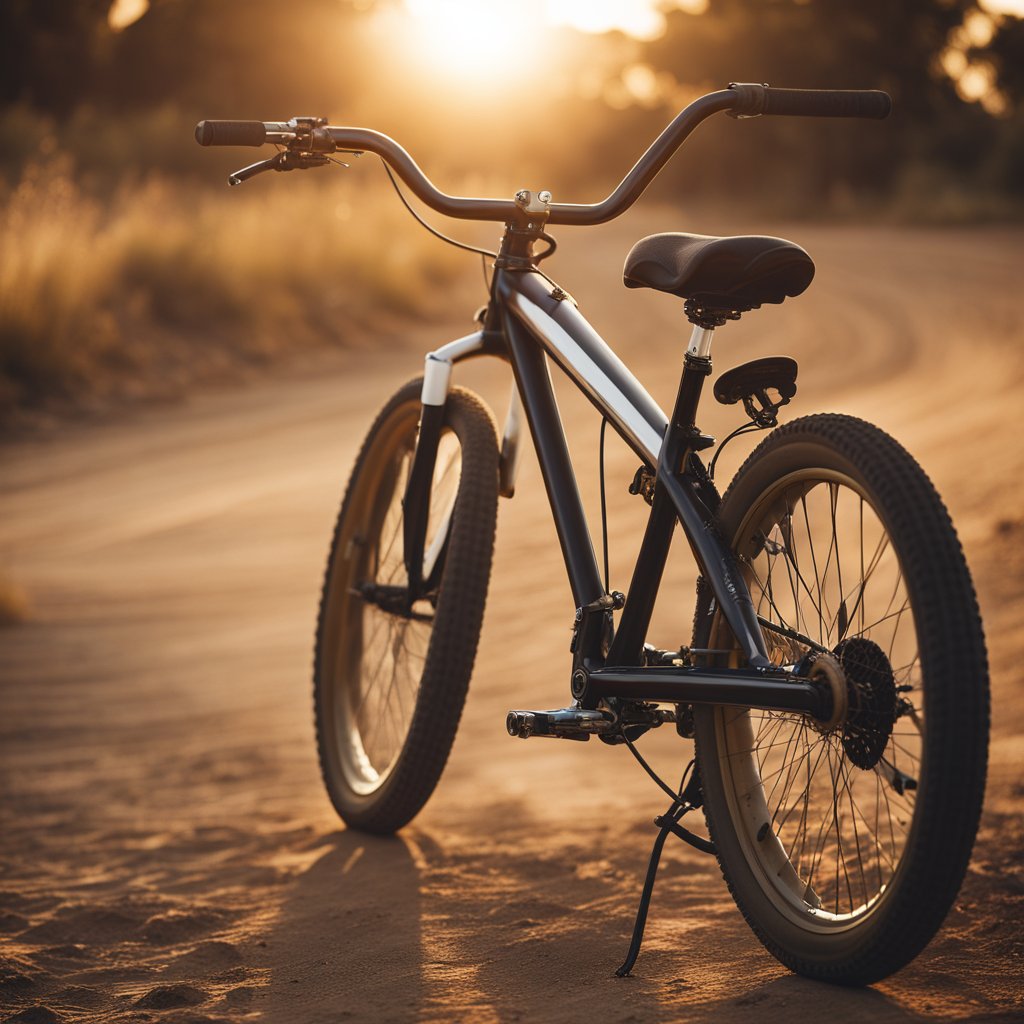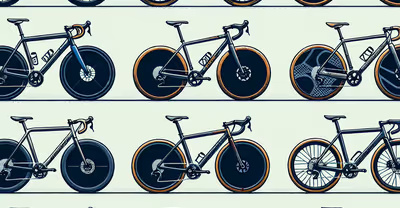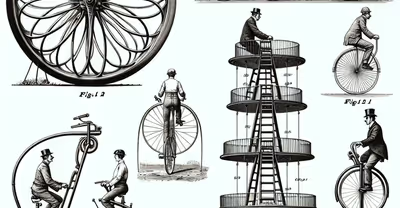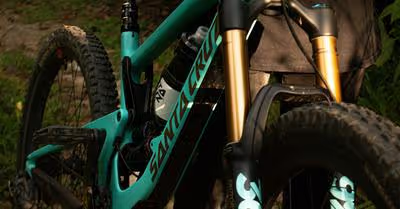
Key Takeaways
- Bicycles have undergone a significant transformation over centuries.
- Key models have each contributed to the evolution of bicycle design.
- Understanding these models offers insight into the bicycle's history.
Bicycles have transformed the way we move, but have you ever wondered how these two-wheeled wonders came to be?
From wooden frames to sleek carbon, the bicycle's journey is a story of innovation and perseverance.
The bicycle's evolution is marked by key models that revolutionized personal transport, each a cog in the wheel of history leading to today's modern cycles.
You wouldn’t just trust anyone to recount this pedaling progress—lucky for you, you've got experts on your side who've tracked these historic shifts, ensuring you get the full tour from the creaky wood of the draisine to the gleaming gears of a modern mountain bike.
Draisine (1817)

Have you ever wondered where it all started?
Picture this: the year is 1817, and there's no such thing as a bicycle.
Then along comes a guy named Karl Drais with a curious contraption he dubs the "Draisine".
This two-wheeled wonder, also affectionately called the "hobby horse," is about to set the world in motion—quite literally!
Key Features:
- Steering: Unlike anything before, you could actually steer this wooden ride.
- Wheels: Two of them! In line, just like today's bicycles.
- Propulsion: Guess who was the engine? You! Propelled by walking, you'd be striding along in style.
So, how did you go about 'riding' this innovative machine?
You'd straddle the Draisine and use your feet to push off the ground, scooting yourself forward.
No pedals, just pure leg power!
Did You Know?
- Inventor's Flair: The mastermind behind this was none other than Baron Karl Drais.
- Weight: A hefty 50 pounds—certainly not your modern carbon-fiber featherweight!
- Cost: Back in the day, a sturdy model would cost you under four Carolines.
Fancy taking a ride on one?
Well, you'd definitely turn some heads.
The Draisine laid the groundwork for our beloved bicycles today.
Just think, without this brainchild of Baron Drais, your sleek road bike or rugged mountain bike wouldn't exist.
Next time you're pedaling away, give a little nod to the Draisine, the great-great-granddaddy of your two-wheeled ride!
Boneshaker (1860s)

Hey history buffs!
Can you imagine riding a bicycle that feels more like a rattling stagecoach?
That's exactly what the Boneshaker was like back in the swingin' 1860s.
This early bicycle, officially known as the velocipede, may sound like a dinosaur, but it was actually the great-granddaddy of the modern bikes you see today.
So, what made the Boneshaker, well, shake?
First off, it had a wooden frame that was about as cozy as sitting on a pile of sticks.
And the wheels?
They were wooden too, with iron rims that clattered over cobblestones like a set of castanets.
Not exactly your smooth ride!
Key Features of the Boneshaker:
- Frame: Wooden construction
- Wheels: Wooden with iron rims
- Pedals: Attached directly to the front wheel
But the true claim to fame for the Boneshaker was its pedals.
That's right, those clever Michaux folks from Paris rigged up a front wheel that you could actually pedal!
This was the first step toward the bicycles we know and love.
Imagine pedaling down the street with your feet never touching the ground – that's some space-age stuff for the 1860s!
And because the pedal power was all upfront, the front wheel got bigger and bigger to make traveling longer distances easier.
That's some early innovation at its finest.
Do remember, the nickname "Boneshaker" wasn't for nothing.
Riding this bad boy was a bumpy affair.
But hey, you've got to hand it to those 19th-century cyclists—no pain, no gain, right?
Riding this piece of history must have been quite the adventure!
Penny-Farthing (1870s)

Ever seen one of those old-timey bicycles with a front wheel so big it looks like it rode straight out of a Dr.
Seuss book?
That's the penny-farthing for you!
These quirky bikes capture the imagination with their oversized front wheel and comically small rear wheel.
But have you ever wondered why the wheels were so mismatched?
Well, let's hop on the history pedal, shall we?
The penny-farthing, hailing from the 1870s, was a true trendsetter.
The large front wheel wasn't just for show—it was all about speed.
Given the technology of the time, without gears, the bike's speed depended on wheel size.
That means the bigger the wheel, the farther you traveled with each pedal turn!
But here's the twist: these high-wheelers weren’t exactly what you'd call user-friendly.
Imagine trying to climb up onto a wheel that's as tall as you are—sounds like a circus trick, doesn't it?
Safety wasn't exactly top priority, making the penny-farthing most suitable for the bold and the brave.
Here are some fast facts about this high-riding invention:
- Invented in 1871 by James Starley.
- Popularity: Soared in the 1870s and early 1880s.
- Safety: Introduced before the 'safety bicycle' of 1885.
- Name Origin: Named after the British penny and farthing coins, one much larger than the other.
- Design: No shock absorption, so riders felt every bump and jolt.
So there you have it—you've just met one of the historic high rollers of the bicycle world!
Just imagine the balance and grit it took to ride one of these.
While you won't be seeing many penny-farthings on the streets today, their legacy in the bicycle evolution is truly unforgettable.
Safety Bicycle (1885)

Hey there, have you ever wondered how your modern bicycle came to be?
Let's take a quick ride back in time to 1885, when a game-changer called the Safety Bicycle rolled in!
This wasn't just any two-wheeler; it revolutionized the way we ride bikes today.
Inventor Alert! 🛠️ It was John Kemp Starley who brought to life the Rover Safety Bicycle.
Imagine this: equal-sized wheels and a chain-driven rear wheel.
It's not rocket science to see why this design was way more stable than the towering penny-farthings of yesteryear, right?
Here’s a breakdown of what made the Safety Bicycle so special:
- Stability: By gosh, two wheels of the same size meant you wouldn’t take a spill just because a pebble was in your path!
- Chain Drive: This meant efficient pedaling and less fear of face-planting. Who wouldn't want that?
- Safety: Hence its name, it was a relief to many who preferred their teeth intact and their bones unbroken.
The design of the Safety Bicycle is almost like peeking into a crystal ball at the future, since it closely mirrors today's bicycles.
Can you imagine a world without the Safety Bicycle?
We'd probably still be teetering on high wheels, and cycling wouldn't be the accessible joy it is today.
Isn't it fascinating how a few tweaks to design brought us from daredevil heights to the comfortable cruisers we know and love?
Thanks to Starley’s invention, we can all enjoy a safer, more pleasant ride.
So, next time you hop on your bike, give a little nod to 1885 – the year cycling was forever changed!
Schwinn Excelsior (1933)

Ever rolled down the street on a bike and felt every bump and crack along the way?
Enter the Schwinn Excelsior with its revolutionary balloon tires.
Introduced in 1933 by the iconic Schwinn Bicycle Company, this model wasn't just another bike; it was a game-changer in riding comfort and style.
Did you know?
These cushy, air-filled tires quickly became the industry standard because of their superior comfort.
What made them so special?
Well, they were wider and had an inner tube, contrasting with the less maintainable single tube tires of the past.
But it wasn't all about the tires.
The Schwinn Excelsior had a certain panache that made heads turn.
With its streamlined design, riding one didn't just feel good—it made you look good.
This bike began a legacy of cruiser bicycles that are still celebrated today for their laid-back vibe and enduring design.
So, why do we still talk about the Excelsior?
Because it marked a significant step toward today's leisure cycling culture.
It's a piece of history that reminds us that innovation can come in any form—even as rubber meeting the road.
- Year Released: 1933
- Key Feature: Balloon tires
- Significance: Set the standard for comfort and style in bicycles
And let's face it, the Excelsior wasn't just a mode of transport; it was an expression of freedom and joy.
Are you ready to cruise down memory lane and revisit an American classic?
The Schwinn Excelsior is a testament to timeless design and the pursuit of cycling bliss.
Riding one may just be the closest you'll get to pedaling through history.
Raleigh Sports (1940s-1950s)

Have you ever wondered what made the Raleigh Sports bicycle a legend in its time?
Well, you're in for a treat!
In the heart of Nottingham, England, there was a bicycle that became a true icon—the Raleigh Sports.
Now, these weren't just any bikes; they were built to last and designed to charm!
The Raleigh Sports was introduced during the 1940s, and by the 1950s, it had become the go-to bike for folks who valued both durability and style.
Here's what made it stand out:
- British Craftsmanship: Manufactured by the renowned Raleigh Bicycle Company, this model showcased the pinnacle of British bike-making finesse.
- Built for the Long Haul: With a sturdy frame and reliable parts, these bikes were often passed down as treasured heirlooms.
- Timeless Design: Its design was a head-turner and still evokes a sense of nostalgia.
But what really made it the darling of the bicycle world?
- Versatility: Perfect for a myriad of activities, whether you're zipping through city streets or taking a leisurely ride in the park.
- Heritage: The 1950s models, in particular, came with a Brooks B-72 saddle—a mark of luxury and comfort.
In its heyday, the Raleigh Sports wasn't just a bicycle; it was a symbol of the cycling renaissance that swept across continents.
It wasn't about speed; it was about the experience—the wind in your hair and the freedom at your fingertips.
While they may have fallen out of mass favor by the '70s, the spirit of the Raleigh Sports lives on.
Who knows, maybe it's waiting for you to rediscover the roads less traveled.
Ready for an adventure on a piece of history?
Moulton Bicycle (1962)

Ever stumbled upon a Moulton bicycle?
These little engineering marvels hit the streets in 1962 and boy, did they change the game!
Designed by the brilliant Alex Moulton, a name well respected in the automotive industry, this bike brought something new to the table—a full suspension system and itty-bitty wheels that made riding around a smooth and enjoyable experience.
Quick Facts:
- Year: 1962
- Inventor: Alex Moulton
- Notable Features: Small wheels, full suspension
You see, Moulton believed that a compact size didn't have to compromise on comfort or utility.
His designs boasted an easy-to-mount open frame and were even practical for carrying loads.
People might've thought, "Tiny wheels on a bike?
That's a quirky choice!" But Moulton's design proved to be more than just a novelty.
Let's get to the why.
Why small wheels, you ask?
They make for nifty acceleration and an overall agility that larger wheels can't quite match.
And suspension?
That's not just for cars.
It means less rattling your bones on cobblestones or bumpy roads.
The Impact:
- Mobility: Ushered in a new wave of cycling, especially among the urbanites
- Innovation: Influenced the development of folding and commuter bikes
That compact size wasn't just for aesthetics.
It paved the way for the folding bicycle revolution, making bikes portable and city-friendly.
Think about it—carrying your bike up to your fifth-floor apartment suddenly became a lot less daunting, right?
Every time you zip past traffic on your modern foldable or feel thankful for your bike's smooth handling, remember the Moulton Bicycle.
It wasn't just a bike; it was a bold step into the future of urban cycling!
Schwinn Sting-Ray (1963)

Hey there!
Have you ever wondered what a bike with attitude looks like?
Enter the Schwinn Sting-Ray—your childhood dream machine on two wheels, released in 1963.
Imagine the excitement when kids first saw those 20-inch wheels, paired with a long, banana seat and those iconic high-rise “ape hanger” handlebars.
Pure joy on pedals!
Did you know that this bike started a whole new trend?
That's right, the Sting-Ray launched the muscle bike craze that took the 60s and 70s by storm.
It was all about style and fun, combining elements kids saw in motorcycles, which was way cool back then.
Here's a fun nugget of history for you.
The Sting-Ray wasn't an instant believer for everyone at Schwinn.
Only a few visionaries saw its potential, but boy, were they right!
Once this fun-bike hit the streets, it was like wildfire.
Let's look at the numbers:
- Retail price back in the day: $66.95
- Number sold: A whopping 46,630
- Popularity: Best-selling bike Schwinn had ever offered
And guess what?
These bikes didn't just fly off the shelves in one part of the country.
From Maine to Hawaii, the Sting-Ray was the bike to have.
Kids everywhere were cruising their neighborhoods with a new zest for cycling.
It wasn't just a bike; it was an instant classic, a piece of Americana.
Looking back, it's no wonder so many vintage bike enthusiasts seek out this retro ride.
Restoring a Sting-Ray isn't just a hobby; it's a labor of love.
So, if you're all about nostalgia and getting a slice of that good ol' fun biking experience, the Sting-Ray is your ticket to ride.
Isn't history fascinating when it's about something you can zoom around with?
BMX Bike (1970s)

Did you know the BMX bike that revolutionized biking in parks and on dirt tracks started out in the 1970s?
Yes, that's right.
It was in sunny Southern California, where kids, inspired by motocross stars, took to racing their bikes off-road, kicking up dust and catching air on improvised dirt tracks.
Here's a fun fact: BMX actually stands for Bicycle Motocross.
Makes sense, right?
Considering they're like the younger, rebellious sibling of the motocross bike, designed especially for the wild, adventurous spirits.
Now, imagine the bike that started it all.
These were no ordinary bikes; they had to be tough.
The BMX bikes had:
- Compact Frames: To make those sharp turns and stunts a breeze.
- Small Wheels (usually 20-inch): Perfect for quick maneuvers.
- Simple Construction: Who needs fancy gears when you're jumping ramps?
Interestingly, do you know who's credited with popularizing BMX Freestyle?
It was none other than Bob Haro, the founder of the famous Haro Bikes.
Thanks to him and many like him, BMX bikes swiftly moved from local tracks to the world stage, giving skateparks and dirt tracks a new kind of hero.
Did I hear you ask about types?
Definitely, BMX bikes come in various styles, each designed for a specific flavor of BMX fun:
- Park: These are super light, trimmed of any excess weight to make sure you can fly high without anything holding you back.
- Dirt: Beefier than their park cousins, with wider tires to grip the earth as you race and jump over dirt mounds.
Can you believe that what started as a bunch of kids mimicking motocross has turned into a global phenomenon?
And like a true legend, the BMX bike continues to evolve, ensuring that the thrill of BMX biking remains alive for generations to come.
Mountain Bike (1980s)

Hey there, did you know the 80s weren’t just big hair and synth music, but also the birth of a game-changer in cycling called the mountain bike?
This rugged two-wheeler was the brainchild of innovative minds like Gary Fisher and Joe Breeze.
These guys looked at bikes and said, "Let's take this off-road!"
So, what made these bikes stand out?
For starters:
- Sturdy frames: Built to endure the bumps and bruises of the great outdoors.
- Wide tires: These provided much-needed grip on those tricky dirt paths.
- Multiple gears: Hills? No problem. These gears were ready for the challenge.
In 1981, imagine cruising down a trail on the Stumpjumper by Specialized, the first mass-produced mountain bike.
It signaled to the world that mountain biking was no longer a niche—it was here to stay.
Let's not forget the contributions from Scot Nicol, who in 1988 fashioned the first mountain bike frame with carbon, though it still sported a steel rear triangle.
Oh, and the tech didn't stop there.
In 1990, Doug Bradbury rolled out the first suspension fork, with about 50mm of travel to absorb the shocks, using something called elastomers.
These bikes weren't just about function, they heralded a new era of recreation and competition in cycling.
Today, you've got to tip your helmet to those 80s innovators—they didn't just create a bike; they sparked a revolution on wheels.
And when you're breezing down a trail, spare a thought for those trend-setting days of the 1980s that brought us the mighty mountain bike.




















































































































































































































































































































































































































































































































































































































































































































































.avif)
